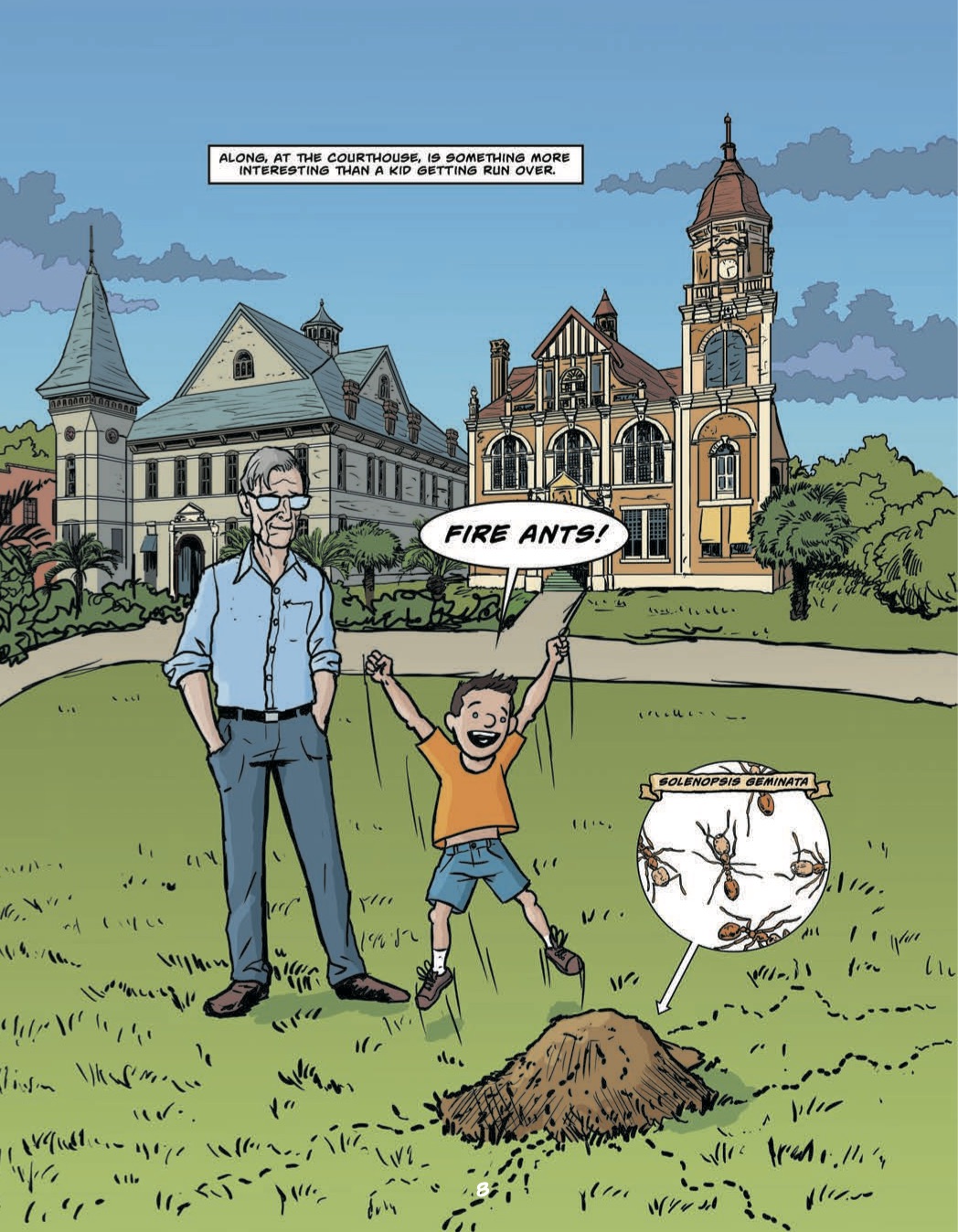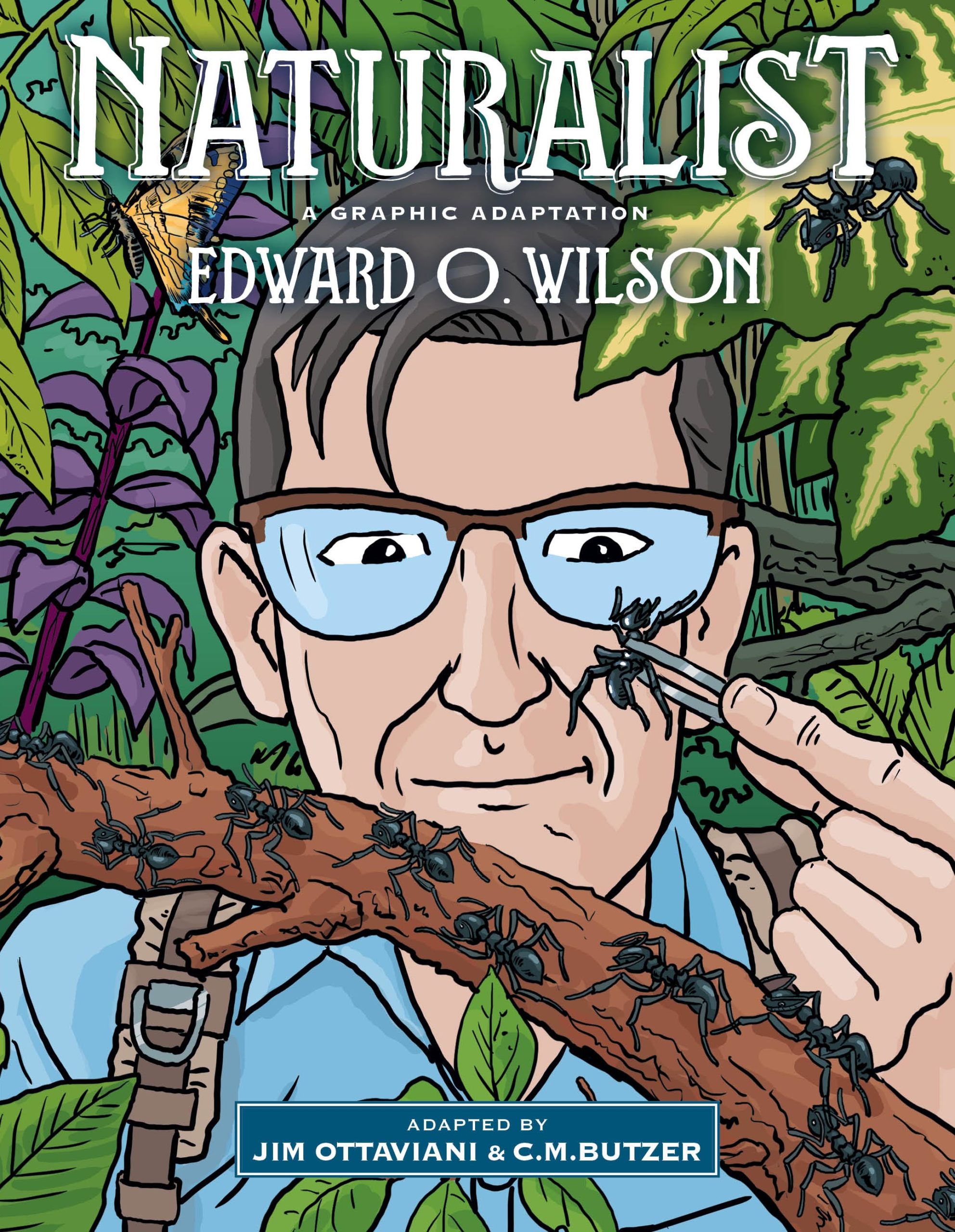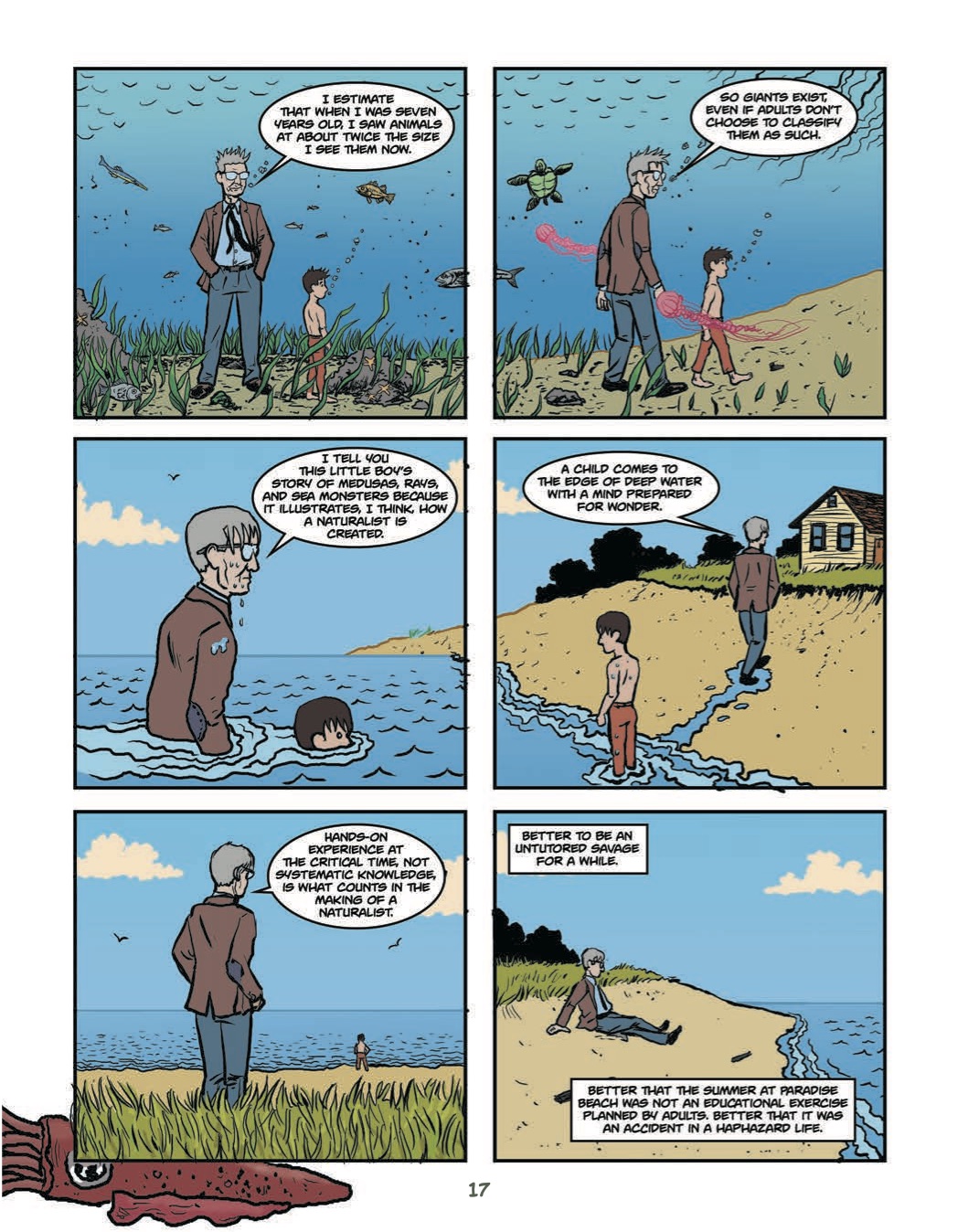- Published in 1994, Edward O. Wilson’s “Naturalist” has long been known as one of the best scientific memoirs of its time.
- A 21st-century graphic adaptation of the novel brings Wilson’s journey of discovering the natural world as a child, and that journey’s influence on his career choices later in life.
- The adaptation was led by longtime graphic novelist, Jim Ottaviani, with illustrations by C.M. Butzer.
Over 25 years ago, world-renowned scientist Edward O. Wilson (often referred to as E.O. Wilson), published his celebrated homage to his personal journey as a scientist, biologist, and human being, Naturalist. Dubbed by the LA Times on its release as “one of the finest scientific memoirs ever written,” the book explores Wilson’s childhood exploring nature in Alabama and the Florida panhandle.
He has authored over 20 books and is a two-time Pulitzer prize winner.
The graphic adaption of Naturalist was conceived by author Jim Ottaviani, who is well-known for his graphic novels about scientists, including Alan Turning, Jane Goodall, Richard Feynman, and others. The book’s illustrator, C.M. Butzer, is a veteran cartoonist.
Mongabay caught up with Ottaviani and the crew at publisher Island Press about Naturalist: A Graphic Adaptation to find out more about how it came to fruition and how it can reach a new audience for Wilson’s lessons of environmental stewardship, study and conservation.

Mongabay (MB): What drew you to this project?
Jim Ottaviani (JO): The short answer is: because they asked. I would never have had the audacity to suggest adapting the memoir of such an important scientist on my own.
So, Rebecca Bright, our editor at Island Press, approached me about doing an adaptation of this classic, and never having done such a thing I was excited about the challenge. I knew I’d learn a lot if I took it on, and I did! From the moment I started reading the prose version with “can this be comics?” in mind, I was underlining and making notes in the margin and looking forward to making a great book into great comics.
MB: What has the journey of making this book been like?
Ottaviani: We started down this path just over four years ago. E.O. Wilson’s journey from curious child to distinguished scientist to dedicated environmentalist follows a path – or perhaps it carves one? – that we all need to take. Not that most of us will become distinguished scientists, but we all start as curious children, and we all can join him where he is now.
MB: What advantages are there to using graphic art to keep conservation a hot topic?
Ottaviani: Our hope is to reach a new audience with this classic book. There are people who won’t pick up a book like the original Naturalist as pleasure reading. And as informative as it is, Naturalist is a pleasure to read. Maybe they’re not interested in non-fiction. Maybe they’re not interested in conservation per se. Maybe it’s that it is a classic, and they’re looking for something fresh. Who knows?
The good news is that there are many people – and I’m one of them – that will see a graphic novel about a topic they’re not naturally drawn to and pick it up just because of the medium. You might do this yourself with movies, or podcasts, or opera. A medium you enjoy can draw you in as much as the subject matter.
MB: Are comics less intimidating as reading matter?
Ottaviani: Sure, comics can be less intimidating for some. Fewer words, more pictures. But they’re just as complex as prose, and capable of layering information in subtle ways to deliver more information than you might think because they simultaneously engage readers in concrete, visual ways and abstract, verbal ways.
A few examples: In comics we can enrich the story by having the images complement or contradict those words. We can use color to set mood. We can even design pages to encourage reading just a bit more by controlling what happens at the end of a page, and using that to hint at what will happen when you turn the page. All of these things work together to hold a reader’s attention in ways that are difficult to do in prose.

MB: You’ve done a lot of comics writing in your career – was there anything about this project that stands out?
Ottaviani: The biggest standout was how enjoyable this was. Part of that was because I got to work with C.M. (Chris) Butzer for the first time, and the colorist Hilary Sycamore again. And part was because I was asked not to depart from the original text. Less outside research meant I could get to work sooner. Now, I still cheated a little, and brought in a few grace notes from other books and writings by Prof. Wilson, but I mostly played by the rules.
The process itself brings to mind a quote attributed to Michelangelo, who when asked how he made one of his greatest sculptures, said: “It is easy. You just chip away the stone that doesn’t look like David.” Though nothing is ever that easy, this project was about taking a beautiful book and chipping away the parts that won’t work as comics.
That meant making some hard choices, of course, because we wanted this to still be Wilson’s Naturalist, both in terms of content and tone.
MB: What were some of the bigger challenges you faced?
Ottaviani: Perhaps the biggest challenge was picking the right spot to end. The original book has an ending, of course, but as I recall, there were at least two other good places to stop, and for the graphic novel adaptation we didn’t have the space to include everything. So I had to pick one, and I didn’t pick the same last lines he used. This made me nervous.
As a self-taught comics guy, I didn’t feel qualified to edit a world-famous scientist and winner of two Pulitzer Prizes. Conversations with my friend and collaborator Leland Myrick helped me through this, and I can summarize what Leland taught me succinctly: sometimes you have to think of comics as poetry. Efficiency and precision in your choice of inked line can produce the same effect as a poem’s concise yet expansive choice of words. So, I’m grateful that Professor Wilson (he says I can call him Ed, but…) recognized that sometimes the best ending for an adaptation doesn’t always appear on the last page of the original.
MB: What role do you see the younger generations playing in conservation going forward?
Ottaviani: Going forward? All of the roles. People of my generation and older have begun the work, and together we have to continue to build tools – physical and social – to move conservation forward, but we certainly won’t finish this work, if it can indeed be finished.

MB: Tell us a bit about the plant and animal life depicted.
Ottaviani: As you read it you probably noticed the rich detail in the flora and fauna, which Chris took great pains to make accurate. Layered on top of that are more cartoonish people. As a result, after a page or two you feel like you’re in a real world, but at the same time the simplified characters – including Wilson – offer the reader an opportunity to see themselves in those drawings. More detail in the people (or less in the settings) would have put more distance between the reader and the world of the graphic novel.
MB: How do you personally see the challenges of conservation that lay ahead of us in the 21st century. Is there much to be hopeful about?
Ottaviani: I’m hopeful because it appears to me that more people than ever care about conservation, and that we’re increasing both our expertise and willingness to take action as a result.
Prof. Wilson put it well in a 2019 interview with National Geographic: “I believe that we’re on the edge of a new era, in which value is extended to saving the rest of nature. Knowing it, preserving it, studying it, understanding it, cherishing it, and holding on until we know what the hell we’re doing.”
Naturalist: A Graphic Adaptation is published by Island Press and is available for purchase at Island Press and booksellers everywhere.
Banner image: The cover of “Naturalist” depicts E.O. Wilson in graphic novel format. Image by C.M. Butzer courtesy Island Press.